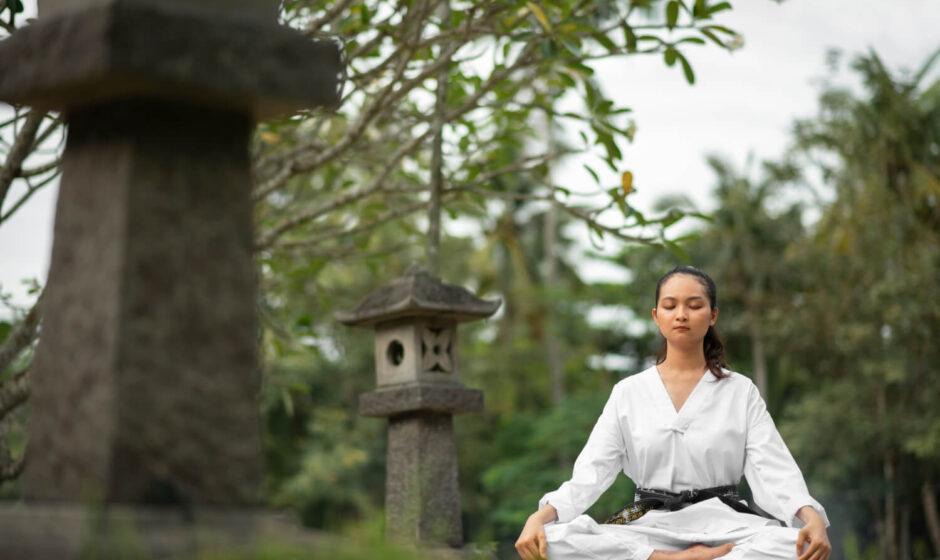Hello, lovers of design and peace seekers! Today, we’re going on an exploration of the beauty of thoughtfully created spaces that support mindfulness and wellbeing, taking us deep into the core of inner peace. We’re talking about designing areas that are not just aesthetically beautiful but also function as havens for the body, mind, and spirit—forget about the bustle. Now, take out your imaginary yoga mats and let’s explore the key elements of using deliberate design to cultivate inner calm.
THE EMERGENCE OF MINDFUL SPACES: AN EXAMINE AT KEY ELEMENTS
Now, let’s begin by removing the surface layers of mindful settings, those peaceful havens that are more than just attractive. Not only are gorgeous interiors important, but also community centers, meditation areas, and ecologically conscious architecture that promote inner peace are all included.
COMMUNITY CENTERS AS SANCTUARY SPACES FOR GATHERINGS:
Imagine a vibrant community center where people congregate for activities as well as to socialize and find comfort. When community centers are carefully planned, they transform from being only physical locations into hubs for emotions and spirituality.
Flexible layouts that support a range of activities, inviting seating areas that promote social contact, and multipurpose rooms that may change to meet community requirements are all crucial elements of community center design. Imagine entering a community center that welcomes you with the warmth of a hug, encouraging you to unwind, interact, and develop a sense of community.
MEDITATION CHAMBERS: THE SILENT PIONEERS
The hidden heroes of mindful design are meditation rooms. These areas are available to anyone looking for a peaceful moment of reflection in the middle of life’s craziness, not just monks and yoga devotees. Soft lighting, cozy seats, and simple design that lets the mind roam are all necessary elements of a meditation space.
Imagine entering a meditation space that quickly draws you into a calm and serene environment. It’s an area where the design itself serves as a guide for your inside trip and where the very air seems to breathe peace. The goal of meditation rooms is to create an environment that encourages quiet and introspection, not only to have no noise.
IDEAS FOR ECOLOGIC DESIGN: BALANCE WITH NATURE
Let’s now discuss ecological design concepts, the ground-breaking idea of balancing man-made environments with their natural counterparts. Ecological design is fundamentally about using sustainable materials, energy-efficient appliances, and naturally-flowing environments. It’s about designing spaces that feel wonderful on an ecological level as much as an aesthetic one.
Imagine walking into a space where the walls breathe with the beat of nature, where sunlight dances through deliberately placed windows, and where the very architecture inspires a sense of oneness with the environment. Ecologic design is recognizing our interdependence with the environment and creating environments that respect and preserve it, not just about being trendy.
THE CHANGING CAPABILITIES OF INTENTIONAL DESIGN: PROVIDING FOR THE SOUL, MIND, AND BODY
Having examined the fundamental elements, let us now delve into the revolutionary possibilities of intentional design. Creating aesthetically pleasing environments is only one aspect of mindful spaces; they also have the ability to nourish the body, mind, and spirit and alter our perception of the outside world.
TAKING CARE OF THE SPIRIT
In an environment where noise and distractions are ubiquitous, deliberate design can work as a spiritual healer. Whether in community centers or meditation rooms, mindful spaces are designed to create a feeling of peace and unity. Carefully chosen color palettes, lighting, and furnishings create an environment that promotes reflection and spiritual health.
Imagine walking into a room where the design itself transforms into a type of visual meditation, instantly elevating your emotions. The goal of intentionally designing a space that connects with your innermost self and provides a break from the stresses of everyday life is to nurture the spirit.
ENHANCING THE MIND
Offering chances for introspection, concentration, and original thought, mindful settings are similar to playgrounds for the mind. Intentional design aspects enhance the mental experience of a space, be it a community center’s dynamic adaptability or a meditation room’s serene ambience.
Imagine an environment that inspires creativity, where the design and furnishings are chosen to foster critical thinking and artistic expression. The goal of mindful design is to enhance the mind by purposefully arranging things to stimulate inquiry and contemplation, rather than merely producing visually pleasing environments.
SUPPORTING THE BODY
There is a close relationship between our surroundings and our physical health. Thoughtful design can benefit the body by encouraging ease of movement, comfort, and relaxation. Our physical experience is strongly impacted by design decisions, whether it’s the calming textures of a meditation room or the ergonomic seating at a community center.
Picture a room that welcomes your body with open arms, where the furnishings serve a purpose beyond mere utility and enhance your physical well-being. Creating spaces that emphasize support and comfort is the foundation of mindful design for the body, which acknowledges the significant influence our surroundings have on our physical health.
THE CALL TO ACTION: ADORE THE BEAUTY OF INNER CALM
It’s time to extend an invitation as we celebrate the transforming power of intentional design. Let’s celebrate the aesthetics of inner tranquility, designers, architects, and people in general. Intentional space beautification is a catalyst for a more deliberate, harmonic, and balanced way of life, not just a fad.
ARCHITECTS AND DESIGNERS: CREATING THE FUTURE
We invite the creative minds that shape our physical settings to see their work as art that improves people’s lives on a personal and communal level, rather than merely as a job. Embrace the challenge of building environments that go beyond aesthetics, settings that have the capacity to inspire, calm, and enrich the human experience.
Think about adding ecological concern, mindfulness, and adaptability into your designs. Let your work serve as an example of the transforming power of intentional design, where every project offers the chance to create spaces that uplift the body, mind, and soul.
INDIVIDUALS: THE KEEPERS OF MINDFUL PLACES
The call is out for the common people who live in these settings to take up the role of attentive environment stewards. Acknowledge how your environment affects your health and make an effort to add to the positive vibes in these areas.
Think of ways to make your immediate surroundings unique, like bringing in some plants, making a comfortable nook for lounging, or just being aware of the energy you project into public areas. Accept the aesthetics of inner calm as a shared duty, realizing that what you do affects the general ambiance of the places you live in.
CONCLUSION
As we come to the end of this investigation into the aesthetic value of intentional design for inner peace, let’s imagine a time when our constructed surroundings act as havens for the body, mind, and spirit. Not only are mindful places luxurious, but they are also essential to building a world that prioritizes balance, harmony, and wellbeing.
So let us, as fellow searchers of peace, advocate for purposeful design. Remember that we can all achieve the aesthetics of inner calm, whether we’re designing the environments of the future or just looking for comfort in the places we live in. Let’s create a future in which each community center, meditation area, and environmentally conscious building serves as a living example of the transforming potential of thoughtful design.
Let us envision a time when the elegance of inner serenity serves as a foundational idea that directs our actions and not merely a fad. May our areas serve as more than just buildings; may they be calm, contemplative spaces that invite us to stop, think, and commune with the deeper currents of our own lives. It’s time to create an environment that resounds with the soft murmurs of tranquility and to embrace the aesthetics of inner peace. Start the mindful space revolution now!



